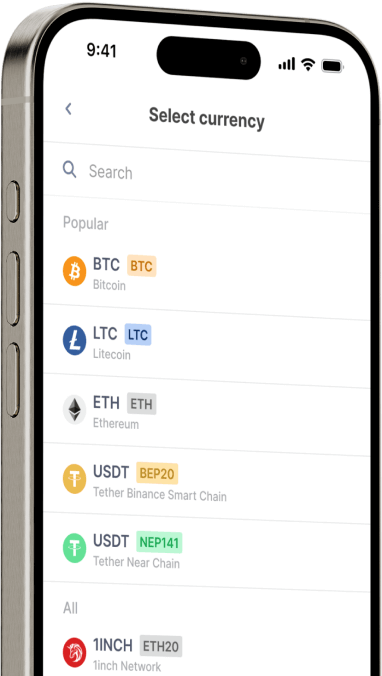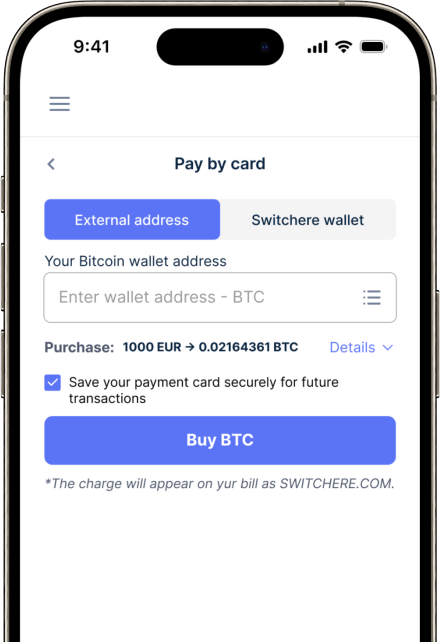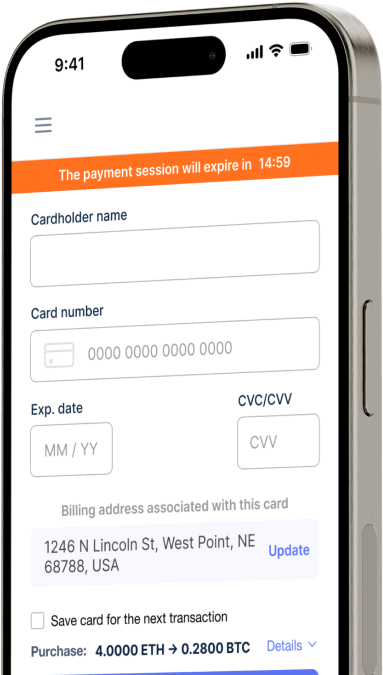Convert
Costa Rican Colon (CRC) to Balancer (BAL) Instantly
Purchase Balancer (BAL) with Costa Rican Colon (CRC) easily at Switchere and benefit from fast, secure transactions.
About
Balancer (BAL)
Balancer (BAL) is a core piece of decentralized finance (DeFi) infrastructure, functioning as a highly flexible automated market maker (AMM) and liquidity protocol. Unlike traditional AMMs that often require 50/50 asset pairs, Balancer's key innovation is its use of customizable, multi-token liquidity pools, also known as smart pools. This allows anyone to create self-balancing portfolios or decentralized index funds where assets are held in specific, weighted proportions. This design not only provides deep, programmable liquidity for traders but also creates arbitrage opportunities that drive the pools back to their intended weighting, effectively automating portfolio management for liquidity providers on its decentralized network.
The protocol's evolution to Balancer V2 introduced a groundbreaking single Vault architecture. This design separates the AMM logic from the token management and accounting, massively improving gas efficiency and capital efficiency. All trades within the Balancer ecosystem are routed through this single Vault, enabling complex multi-hop trades to be executed with significantly lower transaction costs. The native digital asset of the protocol, BAL, serves as a critical governance token. Holders of the BAL utility token can participate in on-chain governance, voting on protocol upgrades, fee changes, and directing the allocation of liquidity mining rewards, thereby shaping the future of this essential Web3 infrastructure.
Buy Other 150+ Cryptocurrencies for Costa Rican Colon (CRC)
Other Coins for Costa Rican Colon (CRC)
-
CRC to ZRX
-
CRC to 1INCH
-
CRC to AAVE
-
CRC to ACH
-
CRC to ALGO
-
CRC to TLM
-
CRC to ANKR
-
CRC to APE
-
CRC to NFT
-
CRC to API3
-
CRC to APT
-
CRC to ARPA
-
CRC to AUDIO
-
CRC to AVAX
-
CRC to AVAX
-
CRC to AXS
-
CRC to BADGER
-
CRC to BAL
-
CRC to BNT
-
CRC to BAT
-
CRC to BNB
-
CRC to BSW
-
CRC to BSV
-
CRC to BLUR
-
CRC to BONE
-
CRC to CTSI
-
CRC to CELR
-
CRC to CELO
-
CRC to CEL
-
CRC to LINK
-
CRC to CHZ
-
CRC to CHR
-
CRC to C98
-
CRC to COMP
-
CRC to CFX
-
CRC to PEOPLE
-
CRC to CVX
-
CRC to ATOM
-
CRC to CTC
-
CRC to CRV
-
CRC to DAI
-
CRC to DASH
-
CRC to MANA
-
CRC to DENT
-
CRC to DGB
-
CRC to DYDX
-
CRC to XEC
-
CRC to EOS
-
CRC to ETC
-
CRC to ENS
-
CRC to ETHW
-
CRC to FET
-
CRC to FIL
-
CRC to FLOKI
-
CRC to GALA
-
CRC to GNO
-
CRC to ONE
-
CRC to HBAR
-
CRC to HOT
-
CRC to HOOK
-
CRC to ICX
-
CRC to ILV
-
CRC to IMX
-
CRC to INJ
-
CRC to ICP
-
CRC to IOST
-
CRC to IOTX
-
CRC to JASMY
-
CRC to JST
-
CRC to KAVA
-
CRC to KCS
-
CRC to KSM
-
CRC to KNC
-
CRC to LDO
-
CRC to LQTY
-
CRC to LPT
-
CRC to LOOKS
-
CRC to LRC
-
CRC to LUNA
-
CRC to MKR
-
CRC to MASK
-
CRC to EGLD
-
CRC to ALICE
-
CRC to NEAR
-
CRC to XEM
-
CRC to NEXO
-
CRC to NOT
-
CRC to NMR
-
CRC to OKB
-
CRC to OMG
-
CRC to ONT
-
CRC to EDU
-
CRC to OP
-
CRC to OGN
-
CRC to CAKE
-
CRC to PAXG
-
CRC to PENDLE
-
CRC to DOT
-
CRC to POL
-
CRC to QTUM
-
CRC to QNT
-
CRC to RDNT
-
CRC to XRD
-
CRC to RVN
-
CRC to REN
-
CRC to RSR
-
CRC to RLC
-
CRC to RPL
-
CRC to SFP
-
CRC to SHIB
-
CRC to SKL
-
CRC to SXP
-
CRC to STND
-
CRC to STG
-
CRC to XLM
-
CRC to GMT
-
CRC to STORJ
-
CRC to STMX
-
CRC to SUSHI
-
CRC to SNX
-
CRC to USDT (Polygon)
-
CRC to USDT (AVAC)
-
CRC to USDT (BEP20)
-
CRC to USDT (ERC20)
-
CRC to USDT (SPL)
-
CRC to USDT (NEP141)
-
CRC to USDT (FA2)
-
CRC to USDT (TRC20)
-
CRC to USDT (JETTON)
-
CRC to XTZ
-
CRC to GRT
-
CRC to SAND
-
CRC to TFUEL
-
CRC to THETA
-
CRC to RUNE
-
CRC to TON
-
CRC to TUSD (BEP20)
-
CRC to TUSD (TRC20)
-
CRC to TWT
-
CRC to UOS
-
CRC to UMA
-
CRC to UNI
-
CRC to USDC (Polygon)
-
CRC to USDC (SPL)
-
CRC to USDC (OP)
-
CRC to USDC (BEP20)
-
CRC to USDC (AVAC)
-
CRC to USDC (ARB)
-
CRC to USDC (ERC20)
-
CRC to VET
-
CRC to VRA
-
CRC to WAXP
-
CRC to WOO
-
CRC to WLD
-
CRC to WBTC
-
CRC to WMINIMA
-
CRC to XDC
-
CRC to YFI
-
CRC to YGG
-
CRC to ZIL
How to Buy Balancer (BAL)
Frequently Asked Questions
-
What is the CRC/BAL trading pair and its function in DeFi?
The CRC/BAL pair represents the exchange rate between the Costa Rican Colón (CRC) and the Balancer (BAL) token. It functions as a fiat on-ramp, allowing you to use local currency to purchase BAL, the governance token for the Balancer Protocol. Balancer is a leading Automated Market Maker (AMM) and decentralized finance (DeFi) protocol that enables users to provide liquidity to various weighted pools and earn trading fees, making this pair a direct entry point into its ecosystem.
-
What is the strategic advantage of using the CRC/BAL pair to enter the Balancer ecosystem?
The primary strategic advantage is direct access. By using the CRC/BAL pair, you bypass intermediate trades (e.g., CRC to USD to ETH to BAL), potentially reducing transaction fees and slippage. This provides a direct fiat gateway for Costa Rican residents to acquire BAL tokens, which can then be used for governance votes, locked for veBAL to boost yields, or used to provide liquidity in Balancer's unique custom-weighted or stable pools.
-
What types of fees should I anticipate when trading CRC for BAL?
When converting CRC to BAL, expect two main fee categories. First, the cryptocurrency exchange or P2P platform will charge a transaction fee for the fiat-to-crypto conversion; this can be a flat fee or a percentage of the trading volume. Second, if you withdraw your BAL to an external digital wallet, you will incur a blockchain network fee (gas fee), as BAL is primarily an ERC-20 token on Ethereum. Always compare the fee structures of different platforms before executing a trade.
-
What are the common payment methods to buy BAL with Costa Rican Colón (CRC)?
To purchase the BAL digital asset with CRC, the most common methods on local or P2P exchanges involve Costa Rica's national electronic payment system, SINPE, and its mobile counterpart, SINPE Móvil. Standard bank transfers (transferencia bancaria) are also widely accepted. On international cryptocurrency exchanges that support CRC, you might find options for debit or credit card purchases, but always verify KYC/AML compliance requirements and associated fees for these methods.
-
How does Balancer's Vault architecture impact my BAL token security?
Balancer's Vault architecture separates token accounting and management from the pool logic. When you interact with Balancer, your tokens are held in a single, secure contract (the Vault), while the AMM logic is executed by external contracts. This design minimizes the attack surface area, as a flaw in one pool's logic is less likely to compromise the underlying digital assets. However, once you purchase BAL on an exchange, it's crucial to transfer it to your own secure digital wallet for self-custody to mitigate exchange-specific risks.
-
Where can I typically find liquidity for the CRC/BAL trading pair?
The CRC/BAL pair is highly specific and may have limited liquidity on major international exchanges. Your best options are likely peer-to-peer (P2P) marketplaces that are popular in Costa Rica or regional cryptocurrency exchanges focused on Latin America. When using these platforms, always check the order book depth and recent trading volume to assess liquidity. An alternative route is to use CRC to buy a more liquid asset like BTC or a stablecoin, and then trade that asset for BAL on a larger DeFi protocol or centralized exchange.




